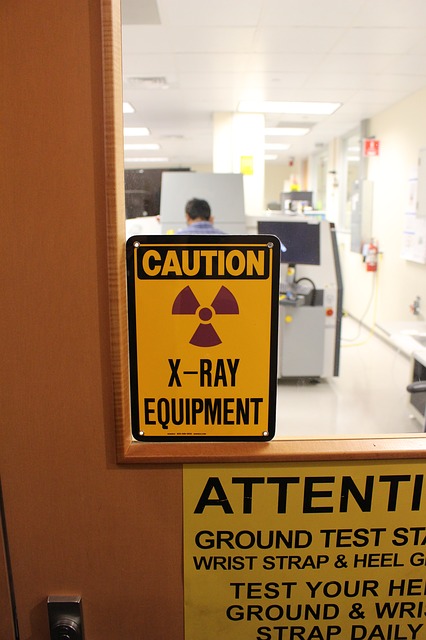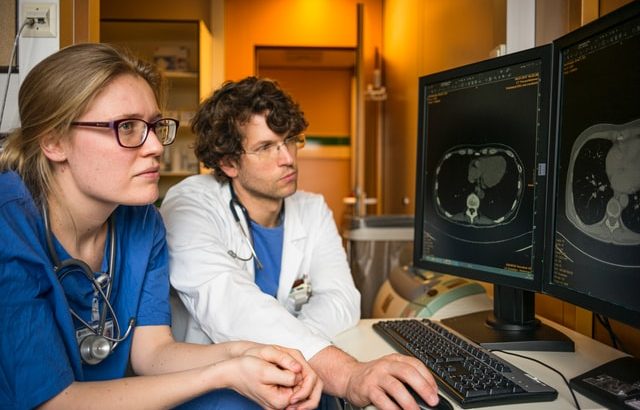Veterinary Radiology: A Newcomer’s Guide to This Specialized Profession
Radiology isn’t limited to the field of human medicine; it encompasses animal medicine as well. There are veterinary radiologists who specialize in radiology-related diagnostics for animals. Like all veterinarians, these specialists hold a Doctorate of Veterinary Medicine (DVM). Veterinary radiologists, however, are specifically trained to interpret diagnostic images in animals. In this post, you’ll learn more about veterinary radiology.
Overview of Veterinary Radiology
Veterinary radiology is a specialized field of veterinary medicine that focuses on the use of medical imaging techniques to diagnose, treat and prevent medical conditions in animals. Whether performed on a human or an animal, medical imaging techniques (see below) are used to create digital images of organs, bones and tissues. X-rays, for example, use electromagnetic radiation to look inside the body of a human or an animal.
Electromagnetic radiation has the unique property of being able to pass through most solid objects — something that can’t be said for light. Therefore, radiologists use X-rays to diagnose injuries and illnesses. Veterinary radiologists are veterinary specialists who use medical imaging techniques to improve the health and wellness of animals. They perform medical imaging, as well as interpret the respective images, to identify physical injuries and illnesses in animals. With this information, veterinary radiologists and other veterinarians can take the right course of action to improve the animal’s health and wellness.
What Tasks Do Veterinary Radiologists Perform?
Veterinary radiologists perform tasks associated with medical imaging techniques. Their primary duty is to interpret radiology-related medical images. It’s difficult for untrained professionals to identify injuries and illnesses from medical images. Regardless of the imaging technique, medical images don’t explicitly reveal which injury or illness an animal is suffering from. Rather, the medical images must be interpreted by a trained professional known as a veterinary radiologist.
While veterinary radiologists often perform medical imaging, other veterinary professionals may perform them as well. Traditional veterinarians, veterinary technologists and veterinary technicians often perform medical imaging on injured or sick animals. With that said, these professions typically pass the medical images to a veterinary radiologist for interpretation. Only veterinary radiologists are trained to read and analyze medical images. They know how to spot specific injuries and illnesses in medical images that would otherwise go unnoticed by other veterinary professionals.
Some of the most common medical imaging techniques used by veterinary radiologists include the following:
- X-rays
- Magnetic resonance imaging (MRI)
- Ultrasounds
- Radiographs
- Position-emission tomography (PET) scans
- Nuclear and molecular imaging
- Computer tomography (CT) scans

Education Requirements for Veterinary Radiology
Like all specialties in the field of veterinary medicine, veterinary radiology has stringent education requirements. You must first obtain a DVM, and that alone can prove time-consuming for aspiring veterinary radiologist. A DVM is a four-year program offered at select colleges and universities. While prerequisites vary, most colleges and universities only accept students who’ve earned a bachelor’s degree into their DVM program.
After earning a DVM, you’ll have to complete an internship, as well as a residency, with a certified veterinary radiologist. The internship typically takes one to two years. During the internship, you’ll work under the supervision of a certified veterinary radiologist while learning the ropes of medical imaging techniques and their applications for veterinary medicine. When you are finished with the internship and residency, you’ll need to take a certification exam. The certification exam for veterinary radiology is offered through the American College of Veterinary Radiologists (ACVR). Only after passing this exam will you earn the title of being a licensed veterinary radiologist.
Keep in mind that veterinary radiology has continued education requirements as well. To maintain your status as a licensed and certified veterinary radiologist, you must complete all of the required continued education. Most forms of continued education for veterinary radiology involve attending classes and participating in projects that involve medical imaging techniques in the field of veterinary medicine.
Benefits of Working as a Veterinary Radiologist
While it requires a substantial amount of schooling, working as a veterinary radiologist comes with several benefits. There’s strong demand for veterinary radiologists, for instance. Veterinary clinics need veterinary radiologists to interpret the medical images of their clients’ pets and animals. Veterinarians, veterinary technologists and veterinary technicians lack the skills and certification needed for medical imaging interpretation. Therefore, clinics regularly hire veterinary radiologists.
Veterinary radiology is a well-paid profession. All veterinary professionals earn a decent salary, though specialists have higher earnings potential because they are required to undergo more education and training.
As a veterinary radiologist, you’ll play an essential role in helping injured and sick animals. Animals can’t speak for themselves. When injured or sick, they rely on humans for treatment. Unfortunately, veterinarians often have trouble diagnosing injuries and illnesses that occur within an animal’s body. They can often perform X-rays and other medical imaging techniques, but they can’t interpret the medical images themselves. As a veterinary radiologist, you can assist veterinarians with the interpretation of medical images so that they can treat injured and sick animals.

